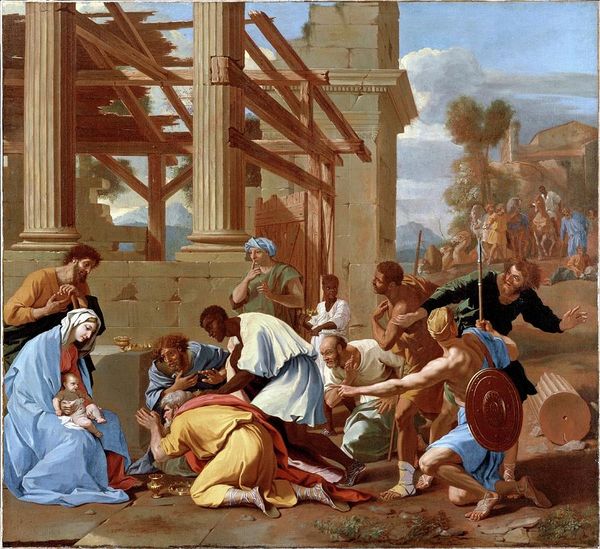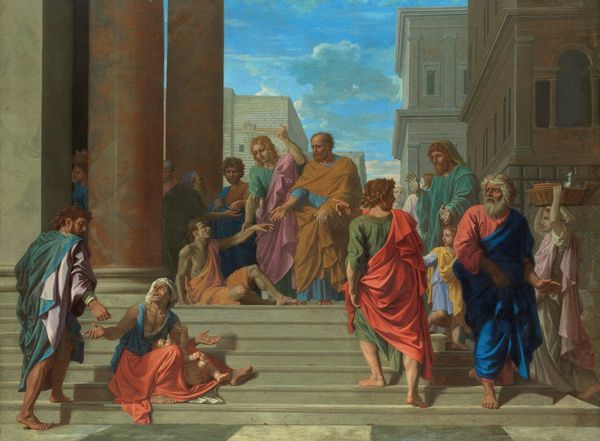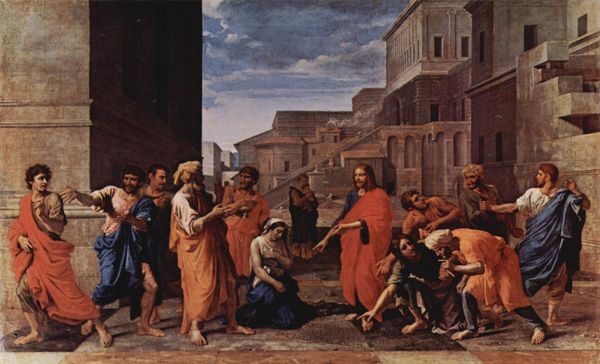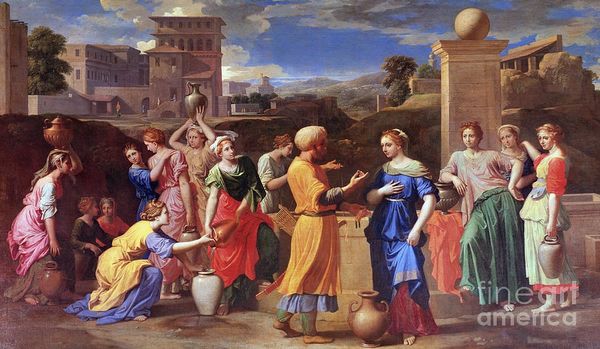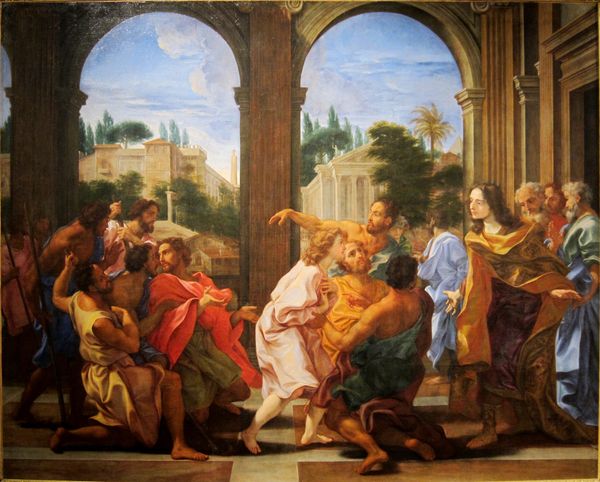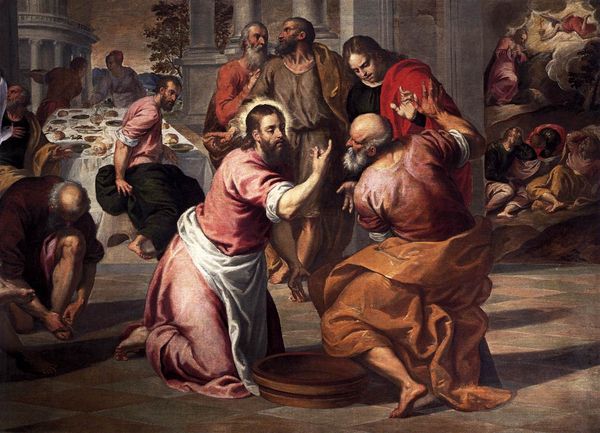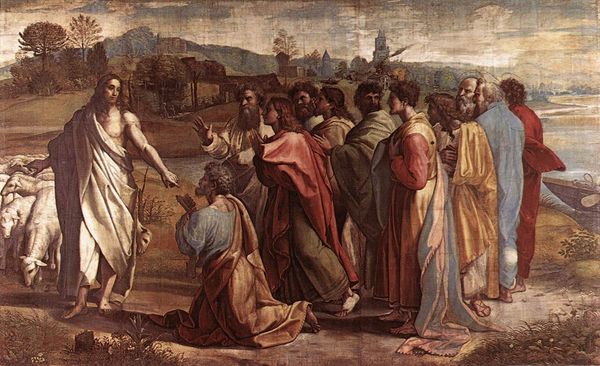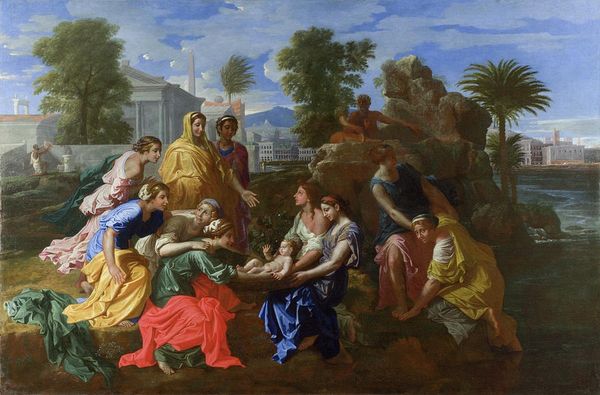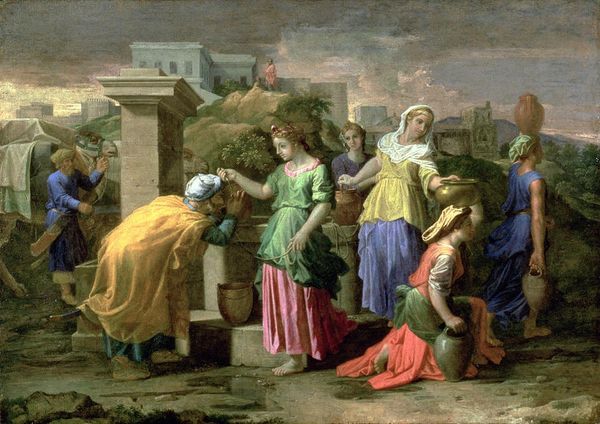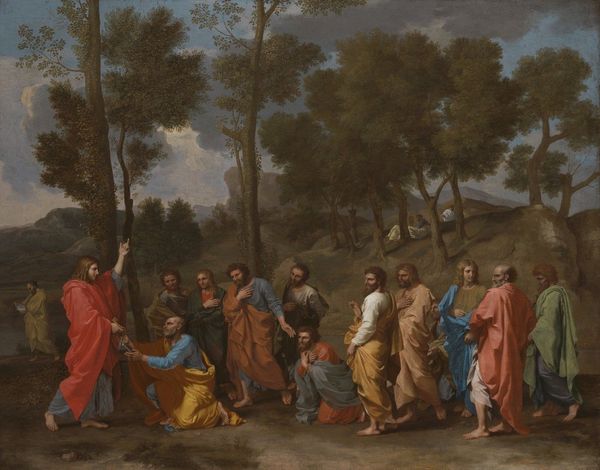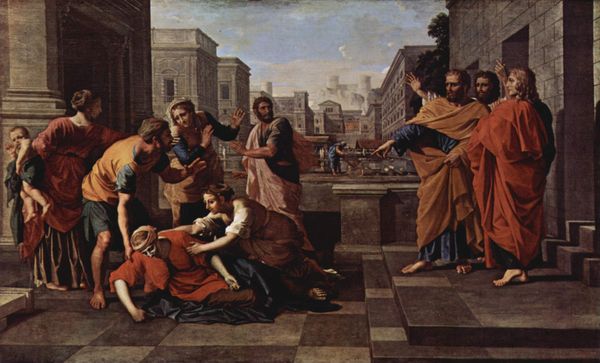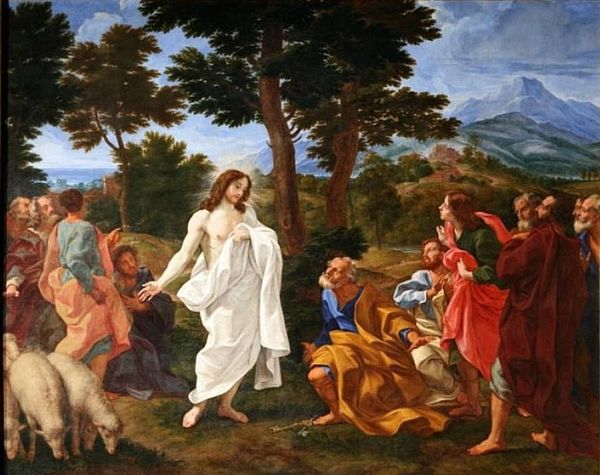
painting, oil-paint
#
narrative-art
#
baroque
#
painting
#
oil-paint
#
landscape
#
figuration
#
oil painting
#
classicism
#
history-painting
#
portrait art
Copyright: Public domain
Nicolas Poussin painted “The Blind of Jericho” in Rome, sometime in the mid-seventeenth century. In it, Jesus cures two blind men, as described in the Gospel of Matthew. Biblical scenes like this were enormously popular at the time. But, whereas earlier artists used such images to generate religious awe, Poussin’s interpretation, painted amidst the Protestant Reformation, feels far more concerned with the display of humanist values. This is an image about community. Rather than awe, it conveys a sense of mutual support and care. The architectural setting, reminiscent of ancient Rome, frames the scene in ways that emphasize stability and civic virtue. For art historians, understanding the politics of religious imagery is crucial. By consulting theological texts and historical accounts, we can gain a deeper insight into the public role of art in the seventeenth century, and what it meant to be progressive at the time.
Comments
No comments
Be the first to comment and join the conversation on the ultimate creative platform.

